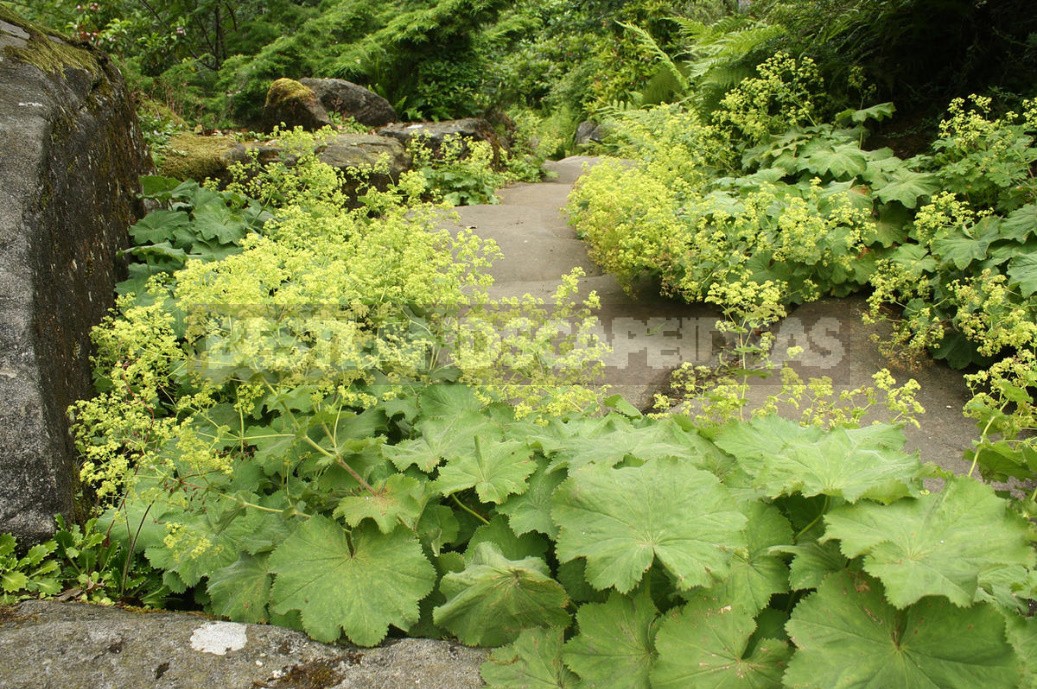
These cute and unpretentious perennials are becoming more and more welcome guests of our cottages. Once settled, they live with us for many years, quickly fill empty spaces in flower beds, give a special charm to garden paths, grow well and look good in pots. The love for Alchemilla is easy to explain: they have surprisingly beautiful leaves, plus the plants are decorative from early spring to late autumn.
Have you ever noticed Alchemilla leaves in the early morning? For sure, it’s hard not to notice such beauty: shining water droplets adorn the edges of the gently pubescent leaf blade, and they are located in the center like precious stones in a velvet box. In this case, often the leaves of neighboring plants in the flower garden can be completely dry. The secret of the appearance of these drops is simple: with an excess of moisture, the plant evaporates it through the water stomata of the leaf blade.
The Latin name of the genus Alchemilla plant received thanks to the efforts of alchemists, who in the middle ages tried to get from its dew the philosopher’s stone and the elixir of life. All attempts were in vain, but for several centuries the “tears” of the cuff were considered miraculous, endowed with special power.
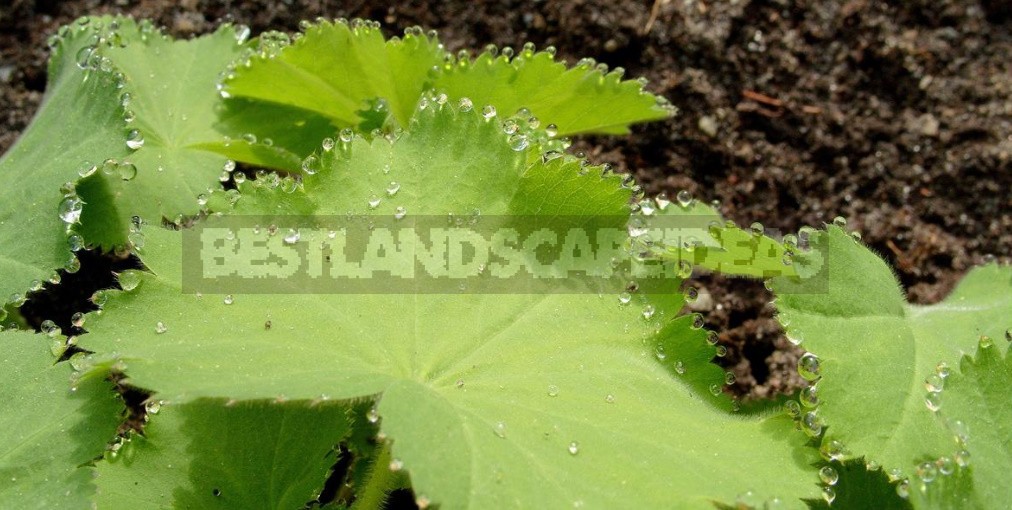
Botanical dossier
The genus Alchemilla belongs to the Rosaceae family. These are rhizomatous herbaceous perennials with rising branched stems up to 50 cm high. The basal leaves are long-stemmed, round-kidney-shaped, multi-lobed or palmately dissected, slightly wavy, folded in radial folds with 9-11 lobes. Stem leaves are sessile, fan-shaped, folded. The flowers are small, yellow, yellowish-green, fragrant, collected in openwork corymbose panicles; they bloom from may to June. Some species produce seeds without fertilization, so the plants are also called “new Amazons”. Fruits are polygons.
The most common types
In culture, 5 European species are most often used.
Alchemilla alpina
The English call it the “Alpine woman’s mantle”. It is native to Northern Europe, the mountainous regions of Western and Central Europe, and Greenland.
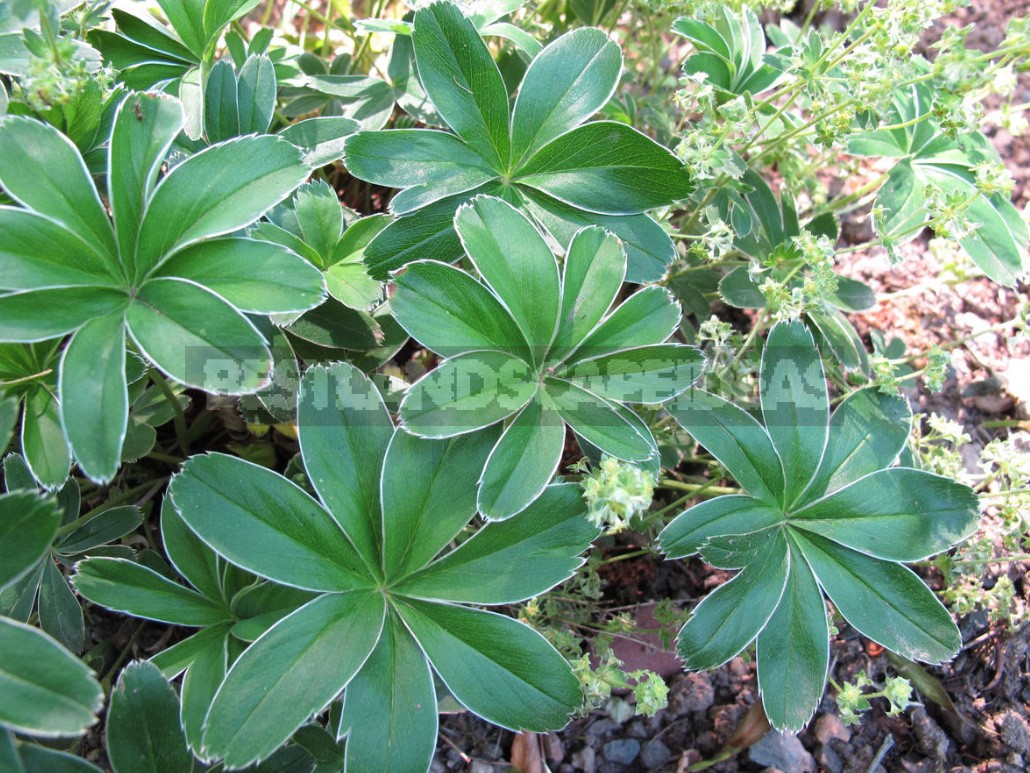
Creeping perennial with a height of 8-12 cm and a width of up to 50 cm. Leaves 5-7-lobed, up to 3.5 cm long, silvery-pubescent on the edge. Yellow-green flowers on peduncles 8-12 cm long in corymbose panicles; bloom in summer.
Alchemilla erythropoda
She comes from the mountain Balkans, the Caucasus, and Turkey.
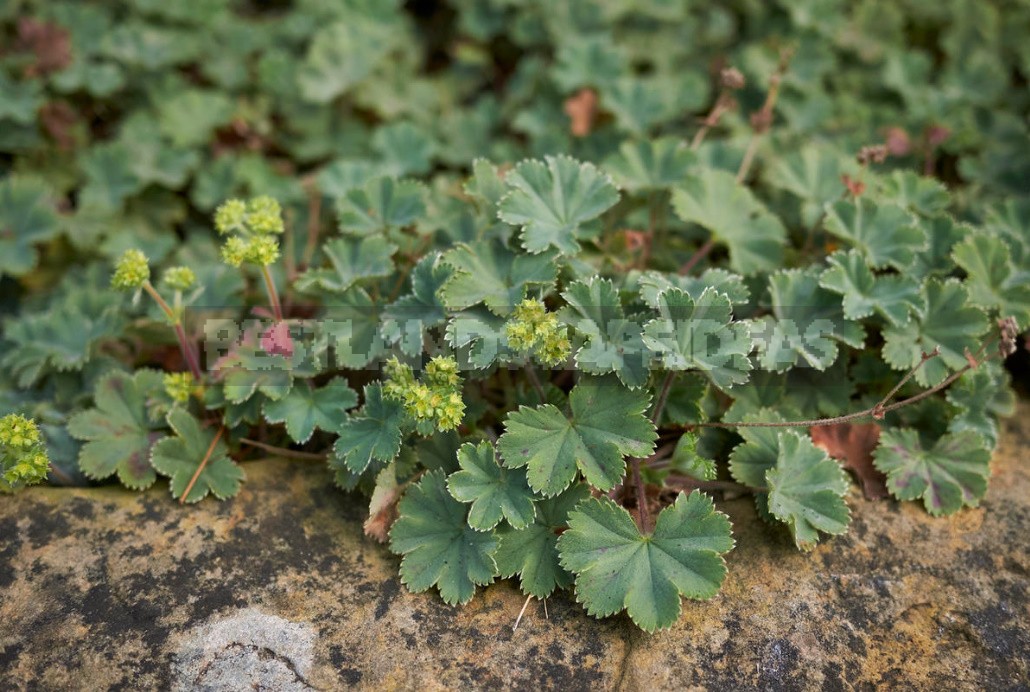
Cushion-like perennial with a height of 20-30 cm and a width of about 20 cm. Leaves 7-9-lobed, bluish-green, 3-5 cm long. The flowers are yellowish-green, in corymbose panicles, and bloom from late spring to late summer.
Alchemilla mollis
The most popular view. He is from the Caucasus, Turkey.
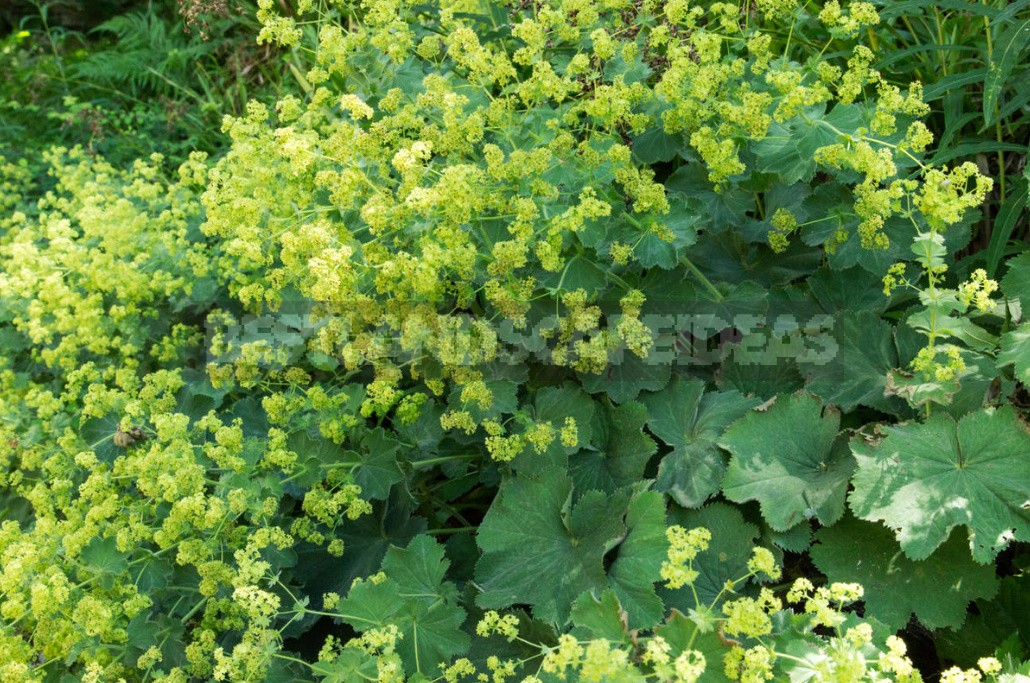
Pillow-shaped perennial with a semicircular habit (appearance), 60 cm high and 75 cm wide. Leaves are rounded, soft-pubescent, with 9-11 concave lobes, up to 15 cm long. Greenish-yellow flowers are small, collected in corymbose panicles; they bloom from June to early autumn. The flower stalks to a height of 60 cm
An ornamental cultivar: ‘Thriller’ (compact, flowering is more abundant, the flowers more green).
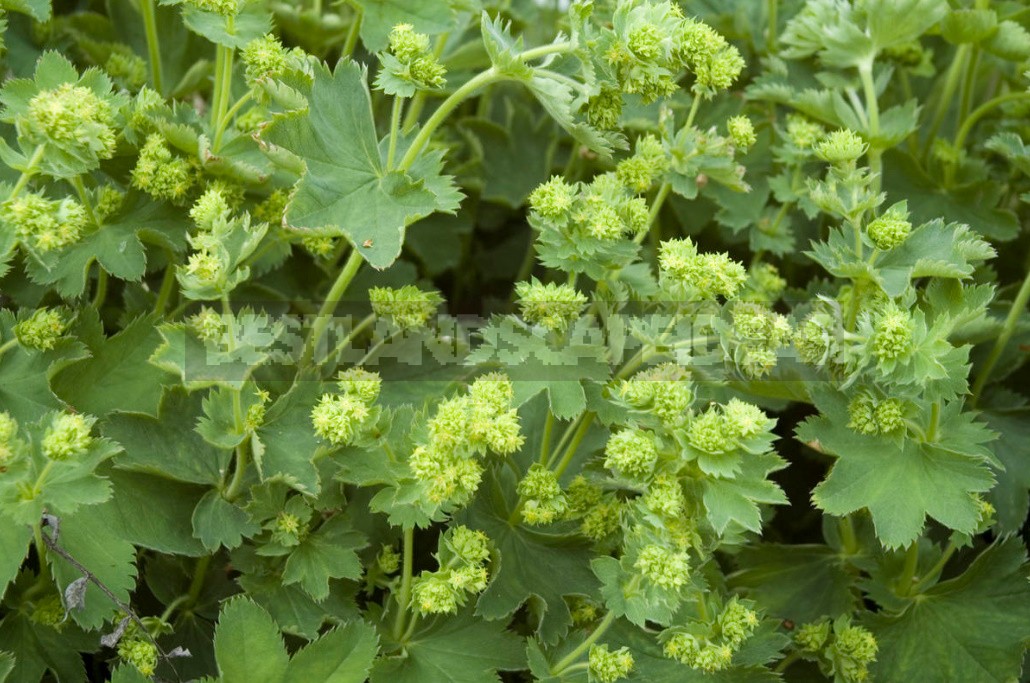
Alchemilla mollis develops quite normally in well-lit areas with loose, fertile, constantly moist soil.
Alchemilla conjuncta
A very interesting species of Alchemilla native to the South-Western Alps.
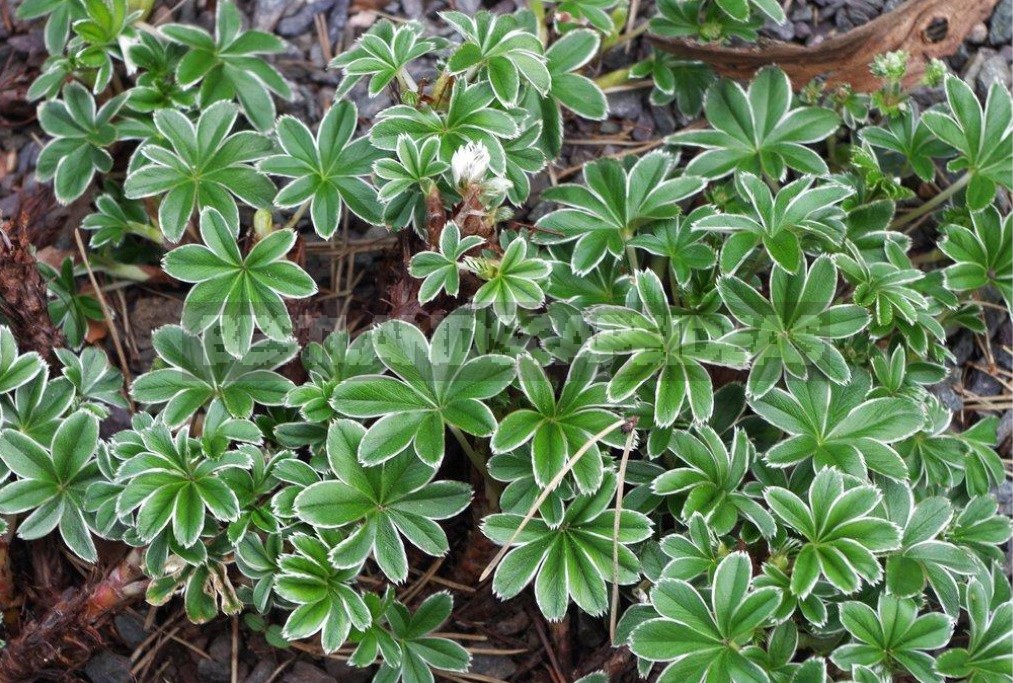
Cushion-like perennial with a height of 40 cm and a width of 30 cm. Leaves 7-9-lobed, 3.5-4.5 cm long, bluish-green, silvery-pubescent. Corymbose panicles of nondescript greenish flowers appear all summer.
Alchemilla faeroensis
This elegant beauty hails from Eastern Iceland.
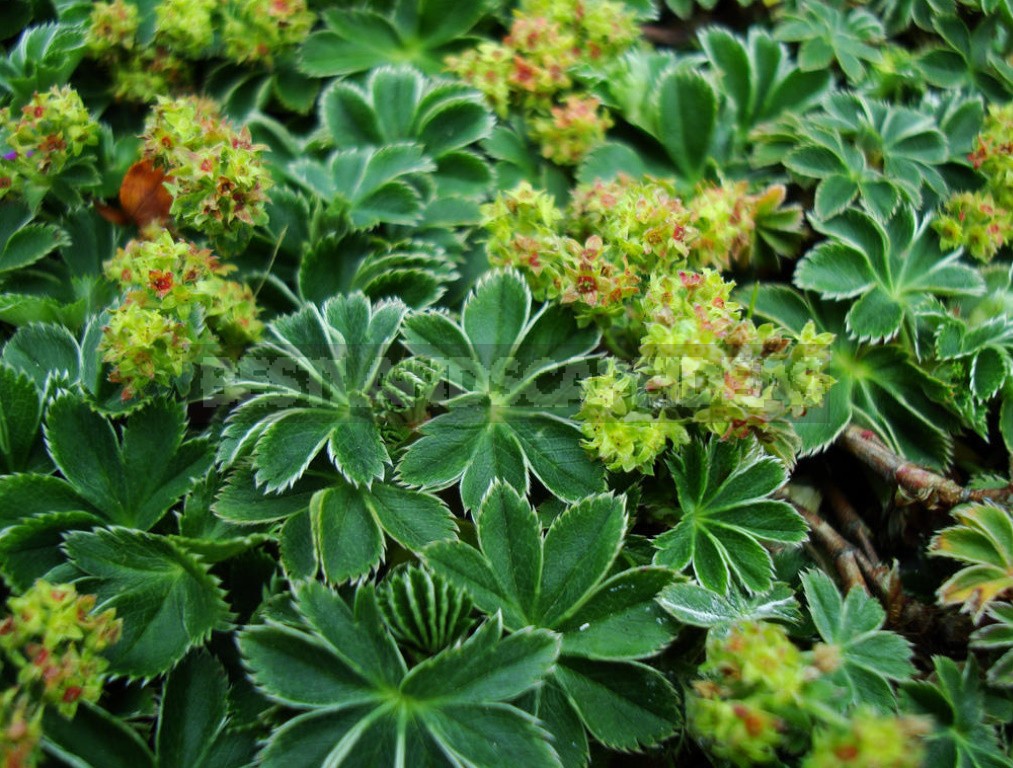
Cushion-like perennial with a height of 40 cm and a width of 30 cm. Leaves 7-9-lobed, bluish-green, silvery-pubescent, 3.5-4.5 cm long. Greenish-yellow small flowers, collected in openwork inflorescences, appear from early summer to early autumn.
How to grow Alchemilla
A lot of work is not required: all species are unpretentious in culture, adapt to different lighting (they can be grown in Sunny flower beds, and in shady) and soils (with a pH of 4.5 to 7.5). In Sunny places, the bushes will be more compact, but if there is a lack of moisture, the tender leaves (especially young ones) can burn. The best option of accommodation where the cuffs will be the most comfortable, light partial shade.

They will be especially luxurious on fertile loam. On poor soils, you can not do without spring fertilizing with a complex mineral fertilizer. They can grow up to 10 years in one place without problems. Easy to transfer.
They are tolerant of droughts, but in hot dry summers, watering is extremely necessary.
After flowering, cut at the soil level to encourage the growth of new shoots and re-flowering in September. It can be damaged by naked slugs and affected by powdery mildew.
They don’t cover you for the winter.
Methods of reproduction
Alchemilla is propagated by seeds, Bush division, and cuttings.
By the way, it is difficult to collect Alchemilla seeds, since they fall off imperceptibly when maturing. Hence the disadvantage-self-seeding (Alchemilla can strongly weed, especially Alchemilla mollis). To limit uncontrolled spread throughout the site, you need to cut off the fading flower stalks in time. Seed propagation is possible by two methods:
- Seeds are sown under winter in a cold greenhouse (cover with dry leaves).
- In the spring (in April), after stratification (for 1 month at a temperature of +5…+7°C).
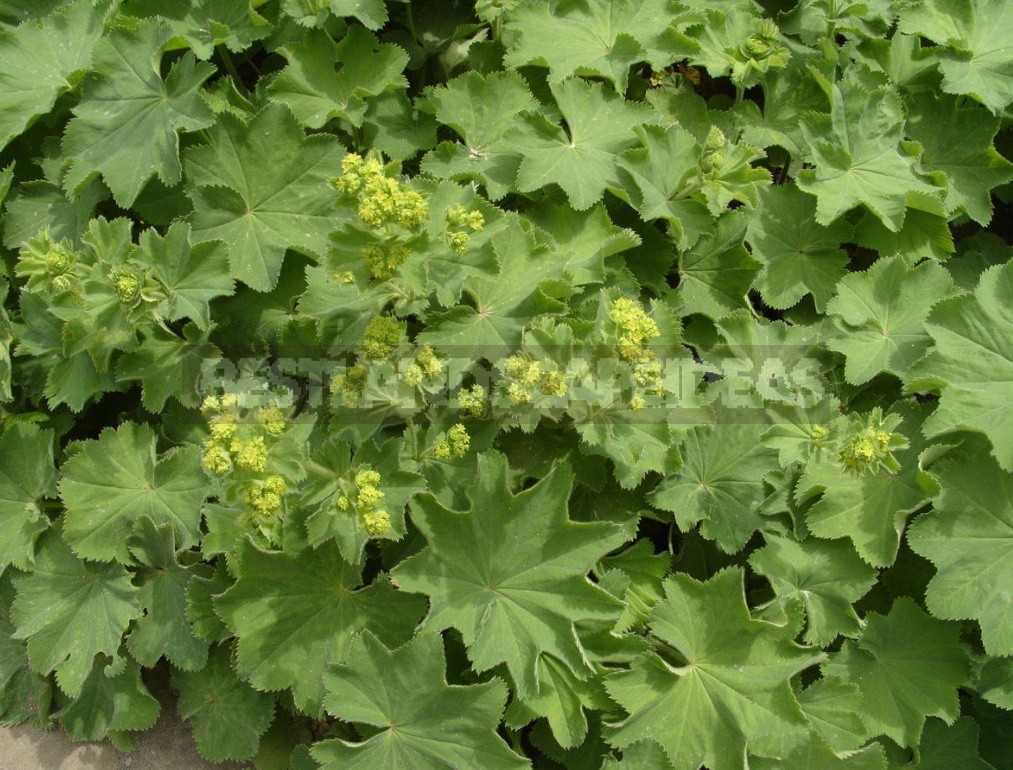
At a temperature of +16…+18°C shoots appear in the period from 2 weeks to 3 months. In the phase of 1-2 real leaves, seedlings dive into the seedling beds. In August, they are planted in a permanent place.
The optimal time for vegetative propagation of Alchemilla (Bush division, rhizomes and cuttings): early spring (the beginning of vegetation), August and September (after the heat subsides).
For cuttings (from may to August, on a pre-prepared ridge with a loose substrate), use rosettes of leaves with a part of the rhizome, while there is no need to dig the entire plant. The first 2 weeks must be shading and abundant watering.
During spring cuttings in August, Alchemilla is planted in a mixborder.
How to place Alchemilla in your cottage
Alchemilla-almost universal plant! It will be appropriate everywhere, good and harmonious everywhere.
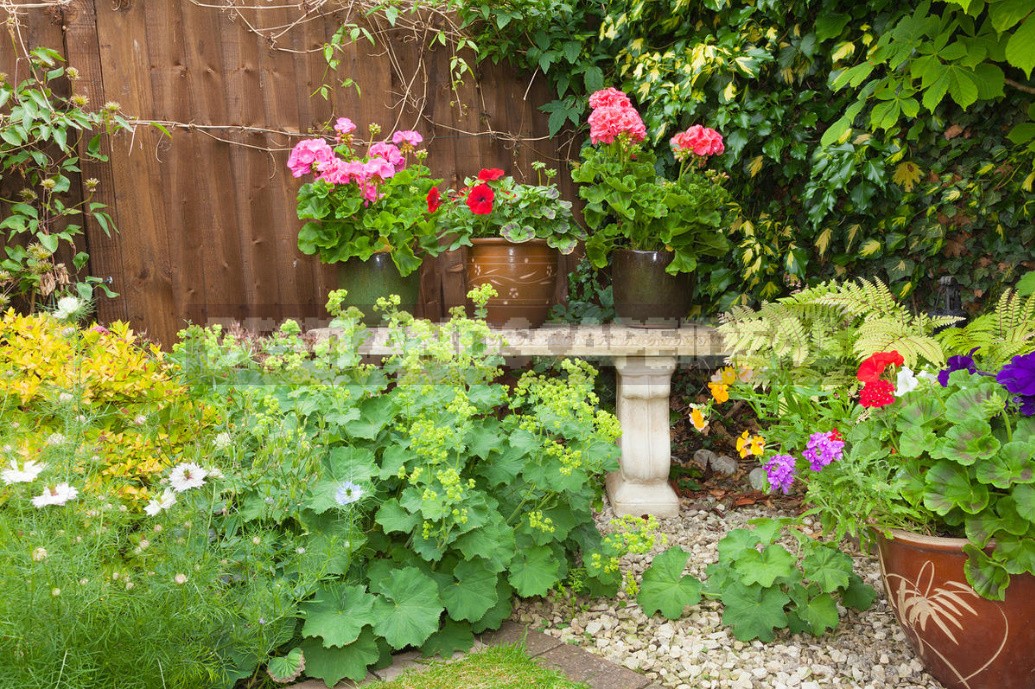
Alchemilla is extremely good as a textured background view. It is as if created to fill voids in mixborders and combine plants into a composition.
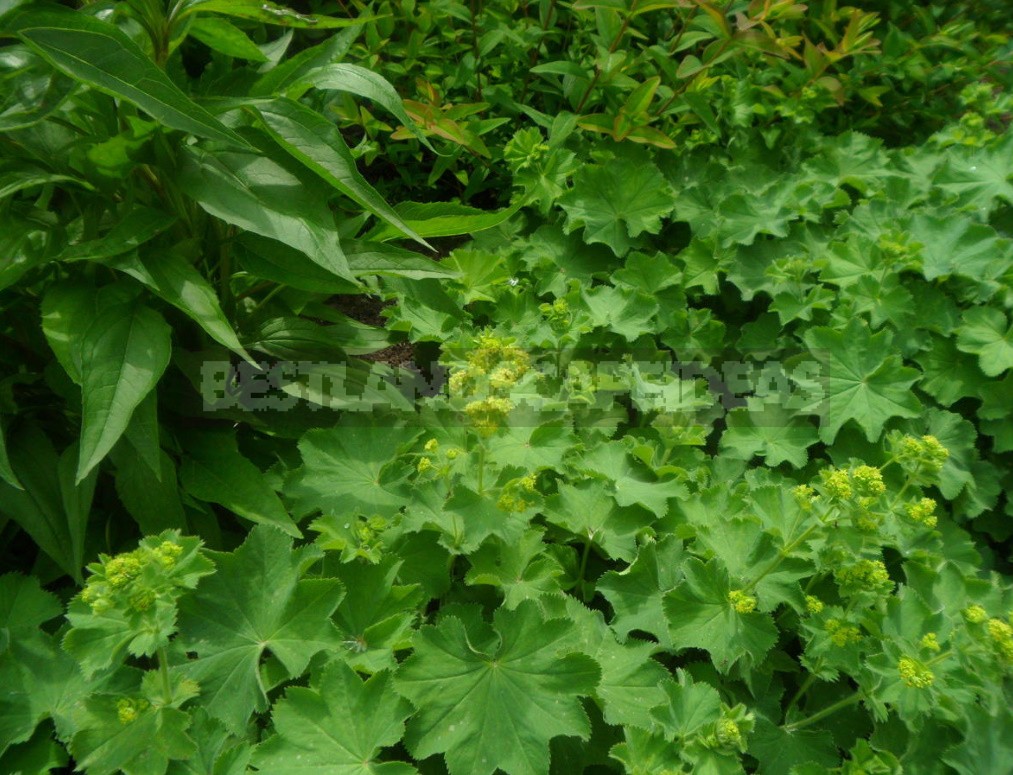
The artful Alchemilla can soften the strict corners of the mixborder with its smooth outlines. These wonderful border plants can decorate the garden path, adequately set off the beauty of blooming white and yellow roses, purple Lavandula, light yellow Sisyrinchium striatum and maroon Heuchera.
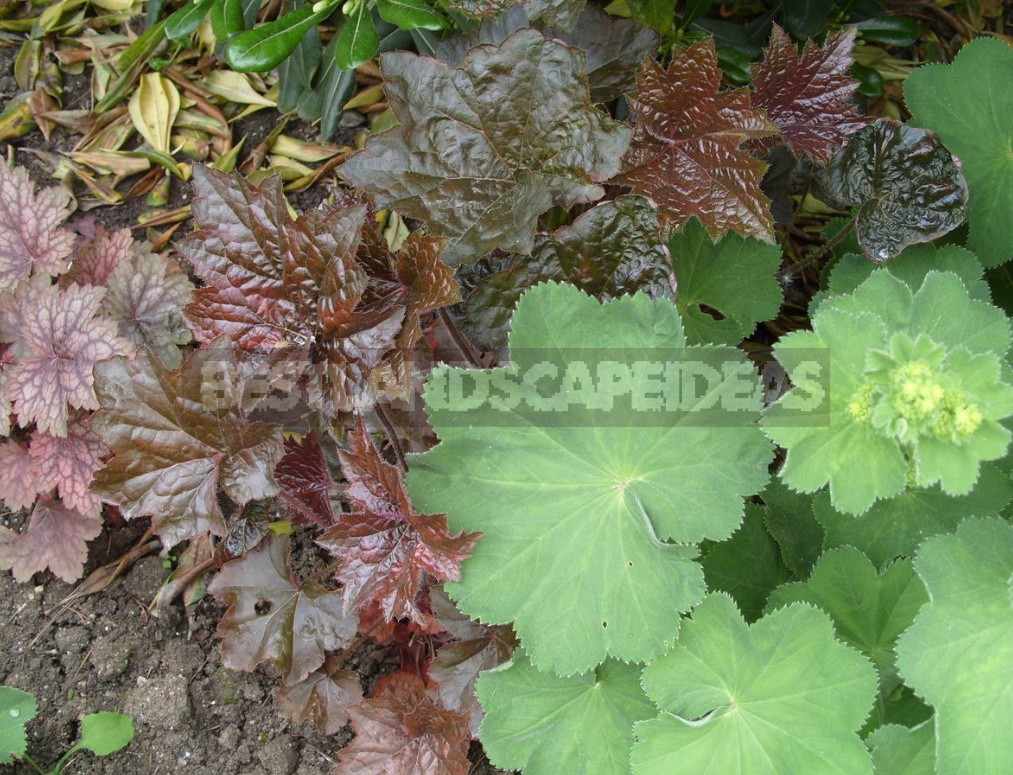
Alchemilla-beautiful groundcover plants that quickly form a beautiful green carpet, during flowering decorated with yellow-green lace openwork inflorescences. Another undeniable advantage of Alchemilla is that it is easy for them to pick up neighbors in the flower garden. An example of a harmonious duets:
- Alchemilla-Veronica spicata;
- Alchemilla-Ageratum;
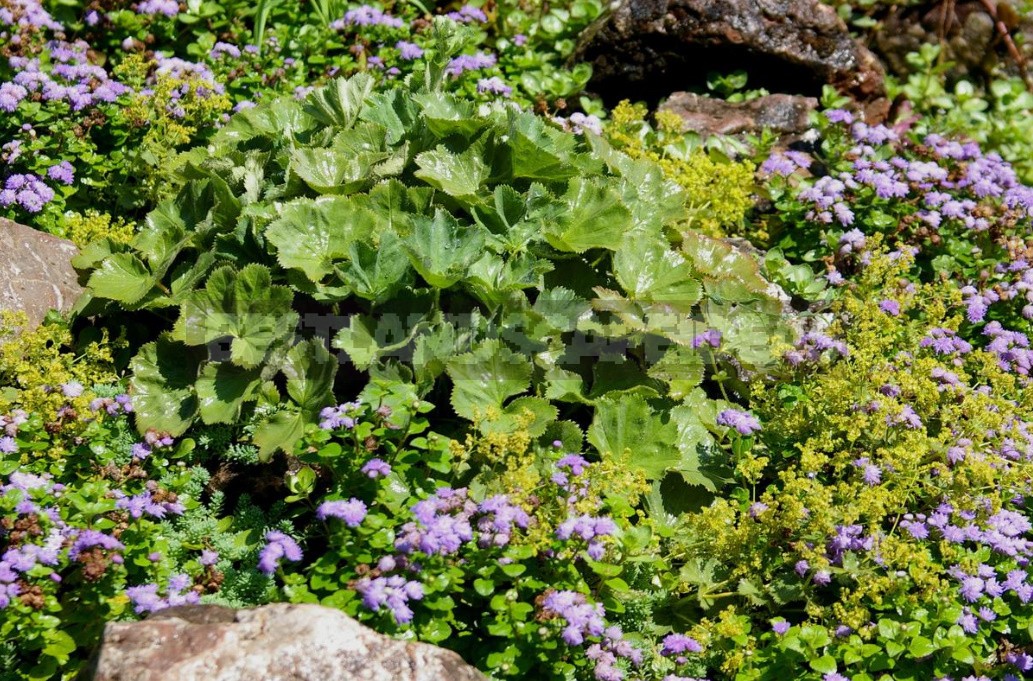
- Alchemilla-Hemerocallis hybrid;
- Alchemilla-garden rose (varieties);
- Alchemilla-Salvia;
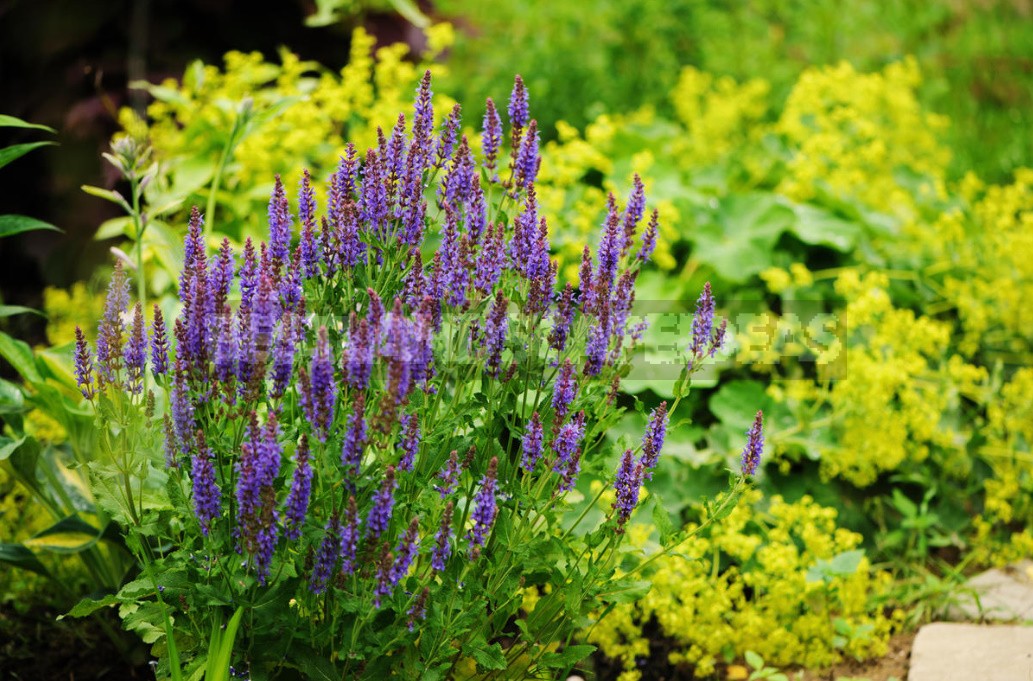
- Alchemilla-Sisyrinchium striatum;
- Alchemilla-Lavandula angustifolia;
- Alchemilla-Silene coronaria;
- Alchemilla-Hosta;
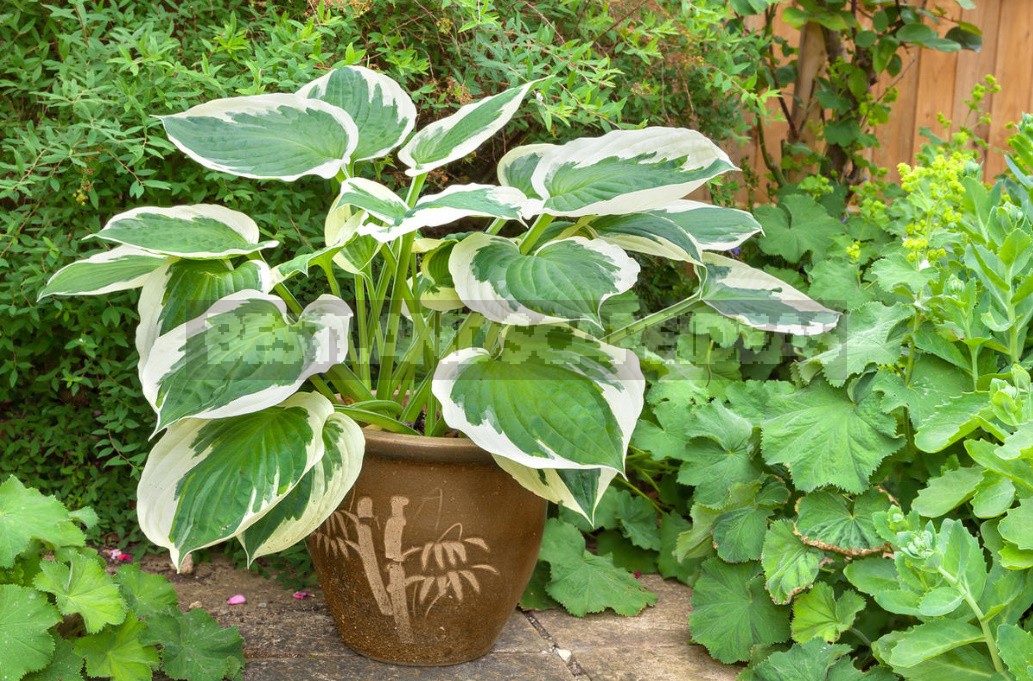
- Alchemilla — Stachys byzantina;
- Alchemilla-Paeonia;
- Alchemilla-Delphinium (varieties with purple, blue flowers) and so on.
A nice practical addition to the exquisite beauty of Alchemilla: they can be added to vitamin salads and used for medicinal purposes.
Does Alchemilla grow in your cottage? In a duet with what plants does she participate? Does it give you trouble?

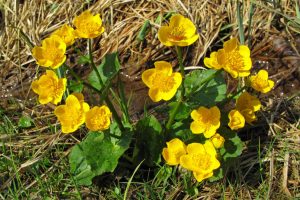
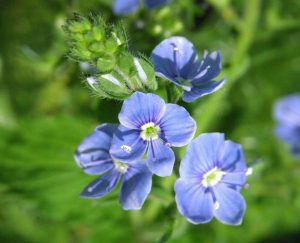
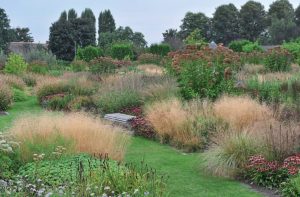
Leave a Reply